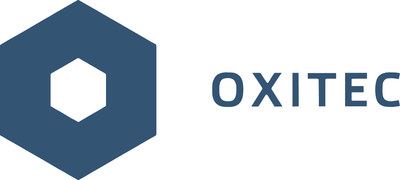Oxitec’s 2nd generation technology will be used across mosquito and agricultural pest applications globally
| OXFORD, England, Nov. 28, 2018 /PRNewswire/ -- Oxitec, Ltd, a UK-based biotechnology company that pioneered the use of biologically-engineered insects for control of disease-spreading Aedes aegypti mosquitoes and crop-destroying agricultural pests, announced today it will be transitioning from its 1st generation self-limiting Friendly™ Aedes aegypti mosquito (also known as “OX513A”) to a new Friendly™ Aedes mosquito (“OX5034") that uses Oxitec’s 2nd generation technology, allowing the company to focus on advancing its entire mosquito and crop pest portfolios using this next-generation platform. This transition comes after a decade of experience with Oxitec’s 1st generation self-limiting Friendly™ Mosquito and after investments made to engineer new core features specifically designed to provide a range of additional benefits for end-users in vector control and agriculture.
The core technical advances of the 2nd generation technology rest on biological engineering to make Oxitec’s insects both male-selecting and self-limiting, a combination of features unavailable in other insect control technologies. Upon the mating of an Oxitec 2nd generation male insect with a wild-type female target insect, the female progeny die (male-selecting), generating near-term suppression effects. At the same time, male progeny survive, half of which carry the self-limiting gene while the other half carry natural insecticide-susceptibility genes. The self-limiting trait decreases in each subsequent generation of males until it no longer persists in the environment. These dual technical advancements unlock a range of performance and operational benefits. Oxitec anticipates improvements in pest suppression, as every release of its 2nd generation insect is designed to provide a multi-generational but self-limiting suppression effect. The projected result is a larger impact per released insect, allowing for both greater cost-effectiveness and higher rates of pest control. Oxitec’s 2nd generation technology also introduces the potential for countering the growing spread of insecticide resistance in target insect pest populations, making it ideal for use within integrated pest management programs. As a result, end-users of Oxitec’s 2nd generation insects may be able to simultaneously extend the life of existing chemical control tools while reducing the amount of insecticides necessary for effective suppression. Operationally, this technology is designed to enable further scalability and cost-savings to end-users. Because Oxitec’s 2nd generation technology prevents females from surviving, it eliminates the risk of releasing female insects, thereby eliminating the need for sex-sorting in the manufacturing process. This solves for what is typically one of the most significant cost-drivers and operationally-challenging requirements for self-limiting insect technologies. “We’ve gone from the equivalent of the original Model T car – innovative and groundbreaking in its day – to a self-driving electric car in just a few years. We broke the mold with the first release of genetically engineered mosquitoes in 2010, and we’re now proud to once again advance our next generation of self-limiting insect technology designed to solve for the precise challenges of cost, safe and targeted suppression, and insecticide resistance facing agricultural and disease-spreading insect control globally in the coming decades,” said Grey Frandsen, Oxitec’s CEO. In the case of Oxitec’s 2nd generation Friendly™ Aedes aegypti mosquito, continued investment in new deployment modalities using 2nd generation features could eliminate need for adult mosquito rearing facilities entirely. “The transition to Oxitec’s 2nd generation technology represents the combination of continued investment in cutting-edge science and the wealth of knowledge Oxitec has gained after more than a decade of deploying its 1st generation technology in mosquitoes,” said Intrexon’s Chief Operating Officer LTG (Ret.) Thomas Bostick, PhD, PE. Oxitec also recently launched a multi-year program to develop two 2nd generation strains to combat two mosquito species that transmit malaria. For those countries where Oxitec is seeking regulatory approval for its 1st generation Aedes aegypti mosquito, the applications will be replaced with applications for its 2nd generation Aedes aegypti mosquito. Oxitec is already piloting its 2nd generation Aedes aegypti mosquito in Brazil after securing regulatory approval for field releases there. Oxitec plans to submit an Experimental Use Permit for its 2nd generation Aedes aegypti mosquito to the U.S. Environmental Protection Agency in the coming months. About Oxitec’s Second Generation Technology Oxitec’s 2nd generation insect technology uses two small genetic modifications to create self-limiting, non-biting insects that are male-selecting (only male progeny survive from mating with a wild-type female insect). Upon the mating between an engineered Oxitec male insect and a wild-type female target insect, the female progeny die, generating near-term suppression effects. The male progeny survive, half of which carry the self-limiting gene while the other half carry natural insecticide-susceptibility genes. In subsequent generations, the self-limiting gene is diluted via a Mendelian pattern – enabling population suppression for up to 10 subsequent generations before the introduced genes are eliminated from the environment. The 2nd generation insects also contain a fluorescent marker similar to the 1st generation, allowing for easier monitoring and performance measurement. The 2nd generation insect strains are built on natural genetic backgrounds chosen for their susceptibility to insecticides. From the portion of non-genetically engineered males that survive, natural wild-type genes are introduced into the target pest population and help dilute the number of insecticide-resistant target pests. Operationally, Oxitec’s 2nd generation Aedes aegypti technology has the potential to be used in new egg-based release modalities. These may help mosquito control districts and public health agencies, as well as commercial pest control operators or private users, employ the technology with ease while allowing Oxitec to pass on cost savings and quality control benefits of scaling egg production in centralized hubs that can serve customers worldwide. About Oxitec About Intrexon Corporation Safe Harbor Statement For more information, contact:
SOURCE Oxitec Ltd. | ||
Company Codes: NASDAQ-NMS:XON |





